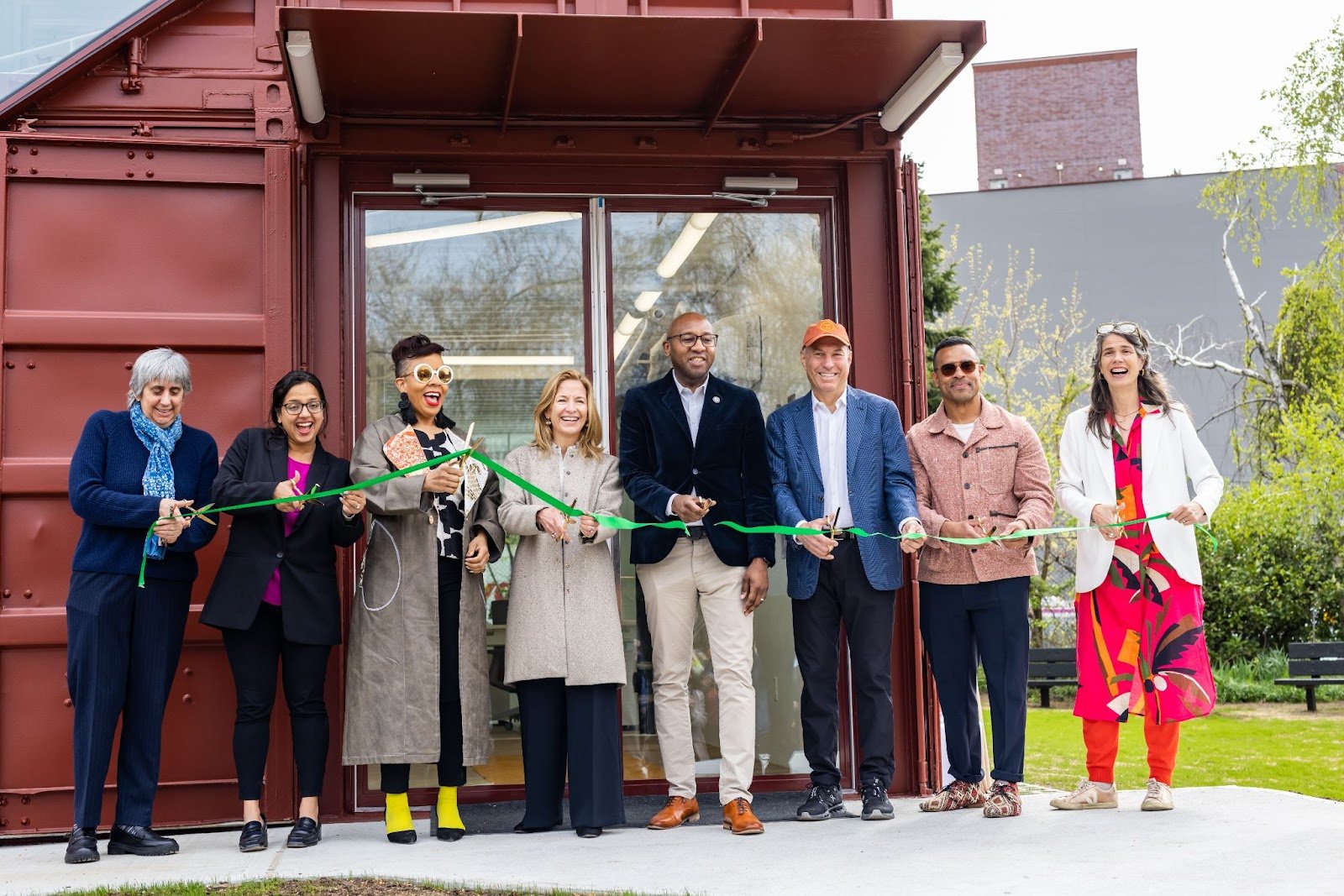‘The Cubes’ open at Socrates Sculpture Park
/“The Cubes” opened as a new administrative building at Socrates Sculpture Park. Photo by Kamila Harris
By Ryan Schwach
Socrates Sculpture Park in Long Island City opened up a unique administrative space made up of storage containers over the weekend.
The space will be the first NYC Parks Department facility for Socrates, and is designed by the architecture firm LOT-EK. Known as “The Cubes,” the infrastructure allows the park to expand programming year-round with new opportunities for visitors, educators, artists and local communities.
The $5.7 million construction project began with the donation of a shipping container studio from the Whitney Museum of American Art in 2014.
The finished building is more than 2,600 square feet, and is 2-stories tall.
It will be used to provide space for public programming, as well as office space for Socrates staff.
“This is a transformative moment for Socrates Sculpture Park - we’ve never had a permanent building inside the Park before,” said Ivana Mestrovic, the board president of Socrates Sculpture Park. “It really cements our place in New York history from landfill to a sustainable site for art and culture.”
Officials and park advocates said it was a big step for the well known Western Queens park.
“Socrates Sculpture Park is one of Queens’ crown jewels, and it’s great to see them expand with their new building, The Cubes,” said Queens Borough President Donovan Richards, who spoke at the Ribbon Cutting. “With this new building, Socrates Sculpture Park will continue to serve the community with even more artwork and educational programming for our kids and adults to enjoy year-round.”
Socrates has become a cultural anchor in Queens, operating both as public open space and a venue for art and culture in Queens.
"Socrates Sculpture Park has evolved over the years but remains rooted in the vision of those who transformed it into a unique public space for all to enjoy,” said Community Board 1 Chair Evie Hantzopolous. “The Cubes are a wonderful addition to this treasured cultural asset in our community.”




